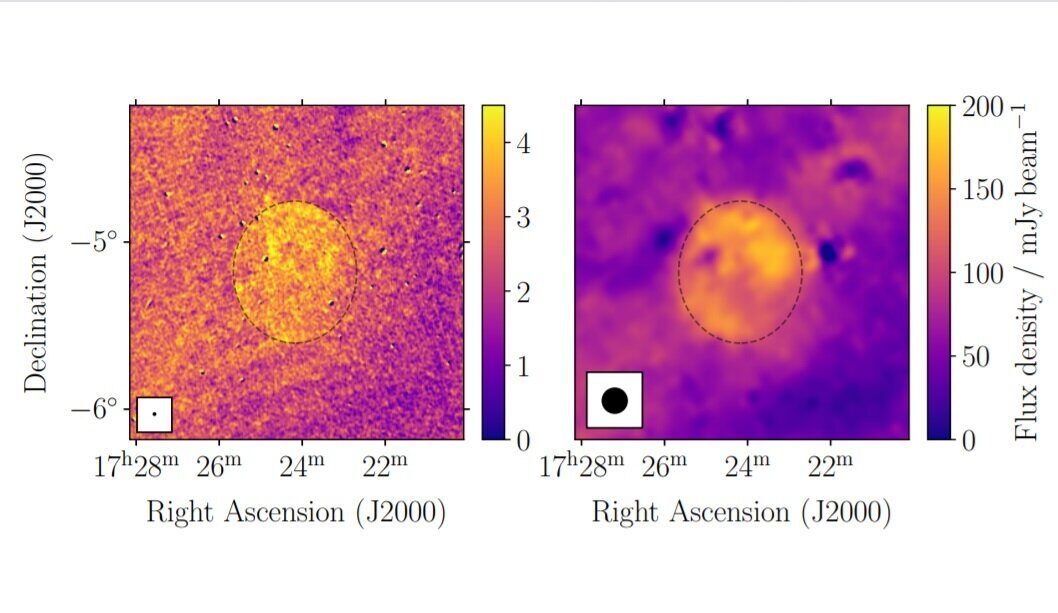
© Araya et al., 2021Region surrounding G 17.8 + 16.7 as seen at 1.4 GHz (left) and 2.3 GHz (right).
Astronomers from Costa Rica and Australia have
reported the detection of a new supernova remnant (SNR) by inspecting a gamma-ray source known as FHES J1723.5−0501. The researchers found that this source is an SNR and it has been designated G17.8+16.7. The finding is detailed in a
paper published December 3 on arXiv.org.SNRs are diffuse, expanding structures resulting from a supernova explosion. They contain ejected material expanding from the explosion and other interstellar material that has been swept up by the passage of the shockwave from the exploded star.
Studies of supernova remnants are important for astronomers, as they play a key role in the evolution of galaxies, dispersing the heavy elements made in the supernova explosion and providing the energy needed for heating up the interstellar medium. SNRs are also believed to be responsible for the acceleration of galactic cosmic rays.
FHES J1723.5−0501 (also known as 4FGL J 1723.5−0501e) is a gamma-ray source detected outside the galactic plane with NASA's Fermi spacecraft. Previous observations have revealed the presence of an unclassified radio shell along the southwestern edge of this source, suggesting that FHES J1723.5−0501 may be potentially associated to an SNR or a pulsar wind nebula (PWN).
Now, a team of astronomers led by Miguel Araya of the University of Costa Rica presents further evidence confirming the SNR hypothesis for FHES J1723.5−0501. Their study is based on the analysis of archival data mainly from the NRAO Very Large Array Sky Survey (NVSS) and the Continuum map of the HI Parkes All-Sky Survey (CHIPASS).
"In this paper we present an analysis of radio observations in the region of FHES J1723.5−0501 that confirm the existence of a shell located within the extent of the gamma-ray source. Our analysis reveals a non-thermal spectrum for the radio emission. The shell-like appearance and spectrum establish this object as a new SNR, labeled G17.8+16.7," the researchers explained.
According to the paper, G17.8+16.7 is clearly visible as a sharp-edged elliptical shell which is quite filled, and brighter and more defined toward the eastern side. The size of this radio shell is 51 by 45 arcminutes.
The total flux density of G17.8+16.7 at 1.4 GHz is 2.1 Jy, while at 2.3 GHz it was calculated to be 1.45 Jy. These measurements indicate a two-point spectral index at a level of −0.75, which is consistent with non-thermal emission from a synchrotron-emitting shell supernova remnant.
The results suggest that the SNR G17.8+16.7 is located at a distance of between 4,500 and 11,400 light years away from the Earth. The astronomers assume that this SNR is about 10,000 years old; however, they cannot rule out that it may be younger or older than estimated. Future multiwavelength observations of this source are required in order to resolve these uncertainties.
It would seem that assumptions are the new tomorrow in such Science, between 4.5 and 11 Ly's, I. ask you.
What's the point? When the Shit is hitting the fan and people are starving they come out with such nonsense.
Scientists ? 🤪 🤪 🤪 🤪 They live on a different planet .